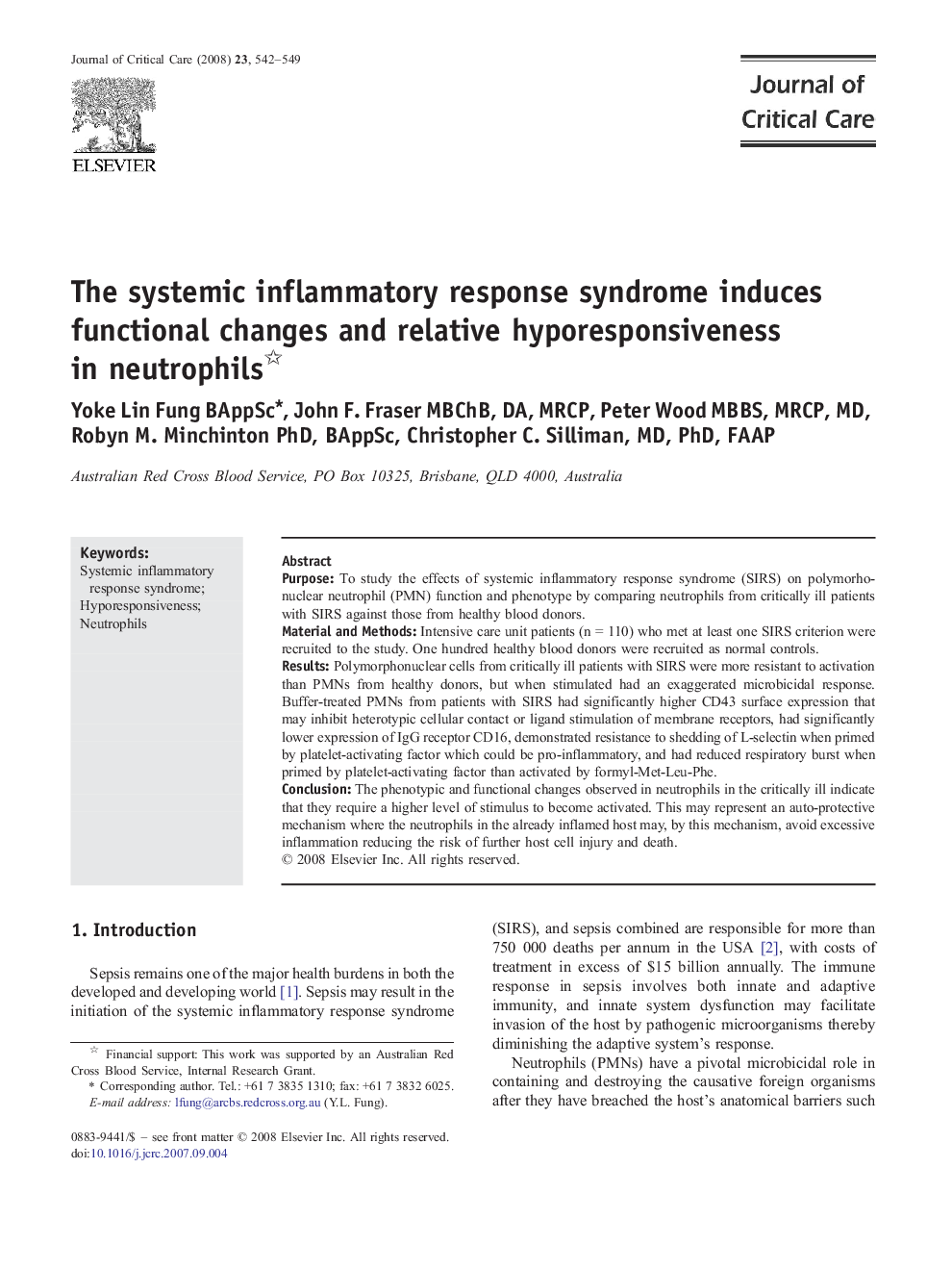| Article ID | Journal | Published Year | Pages | File Type |
|---|---|---|---|---|
| 2765252 | Journal of Critical Care | 2008 | 8 Pages |
PurposeTo study the effects of systemic inflammatory response syndrome (SIRS) on polymorhonuclear neutrophil (PMN) function and phenotype by comparing neutrophils from critically ill patients with SIRS against those from healthy blood donors.Material and MethodsIntensive care unit patients (n = 110) who met at least one SIRS criterion were recruited to the study. One hundred healthy blood donors were recruited as normal controls.ResultsPolymorphonuclear cells from critically ill patients with SIRS were more resistant to activation than PMNs from healthy donors, but when stimulated had an exaggerated microbicidal response. Buffer-treated PMNs from patients with SIRS had significantly higher CD43 surface expression that may inhibit heterotypic cellular contact or ligand stimulation of membrane receptors, had significantly lower expression of IgG receptor CD16, demonstrated resistance to shedding of L-selectin when primed by platelet-activating factor which could be pro-inflammatory, and had reduced respiratory burst when primed by platelet-activating factor than activated by formyl-Met-Leu-Phe.ConclusionThe phenotypic and functional changes observed in neutrophils in the critically ill indicate that they require a higher level of stimulus to become activated. This may represent an auto-protective mechanism where the neutrophils in the already inflamed host may, by this mechanism, avoid excessive inflammation reducing the risk of further host cell injury and death.
